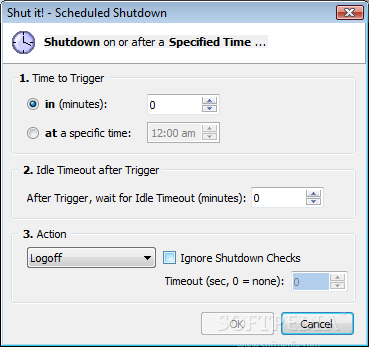


NOTE: If you do not select the Enable session timeout warning option, the system only displays expiration messages to users-it does not give them the option to extend their sessions. This option only appears when you choose to enable the session timeout warning.

Optionally, select Display sign-in page on max session time out to display a new browser sign-in page to the end user when their session times out. This warning gives the user the opportunity to save his partially composed e-mail. If the session timeout warning is enabled, however, the system prompts the user to reactivate his session before the session times out and forces the user’s session to end. Users approaching the session time limit are prompted to save data.įor example, a user may unknowingly reach the idle timeout set for his role while using an e-mail client configured to work with the system, because the system does not receive data while the user composes e-mail. Users approaching the idle timeout limit are prompted to reactivate their session. These warnings prompt users to take the appropriate action when they are close to exceeding their session limits or idle timeouts, helping them save any in-progress form data that would otherwise be lost. This ensures that the reminder pop-up window appears at the correct time.Įnable to notify non-administrative users when they are about to reach a session or idle timeout limit. NOTE: We recommend the difference between Idle Timeout and Reminder Time be greater than two minutes. If this feature is enabled, users will be reauthenticated and extend their current session without interruption. Optionally, select Enable Session Extension to allow users to extend the session beyond the maximum session length.If the received values are below the minimums (5 minutes for the idle timeout and 6 minutes for the session length), the minimum values are used. Optionally, select Use Session/Idle timeout values sent by the primary Radius authentication Server to override the idle timeout and session length specified above.Specify the number of minutes before the timeout is reached. For Reminder Time, specify when the system should prompt non-administrative users, warning them of an impending session or idle timeout.During an end user session, prior to the expiration of the maximum session length, the system prompts the user to reenter authentication credentials, which avoids the problem of terminating the user session without warning. The default time limit for a user session is 60 minutes, after which the system ends the user session and logs the event in the system log. Session Length, specify the number of minutes an active nonadministrative user session may remain open before ending. The default idle session limit is 10 minutes, which means that if a user’s session is inactive for 10 minutes, the system ends the user session and logs the event in the system log (unless you enable session timeout warnings described later). For Idle Timeout, specify the number of minutes a nonadministrative user session may remain idle before ending.Configure session options, as described in Table 5.In the admin GUI, click User > User Roles > RoleName > General > Session Options.Select the Session Options check box on the Overview tab to enable these settings for the role.
#Windows 10 idle timer expired password
Use the Session tab to specify session time limits, roaming capabilities, session and password persistency, request follow-through options, and idle timeout application activity. You are here: Pulse Connect Secure > Pulse Connect Secure Administration Guide > Access Management Framework > User Roles > Specifying Role Session Options Specifying Role Session Options


 0 kommentar(er)
0 kommentar(er)
